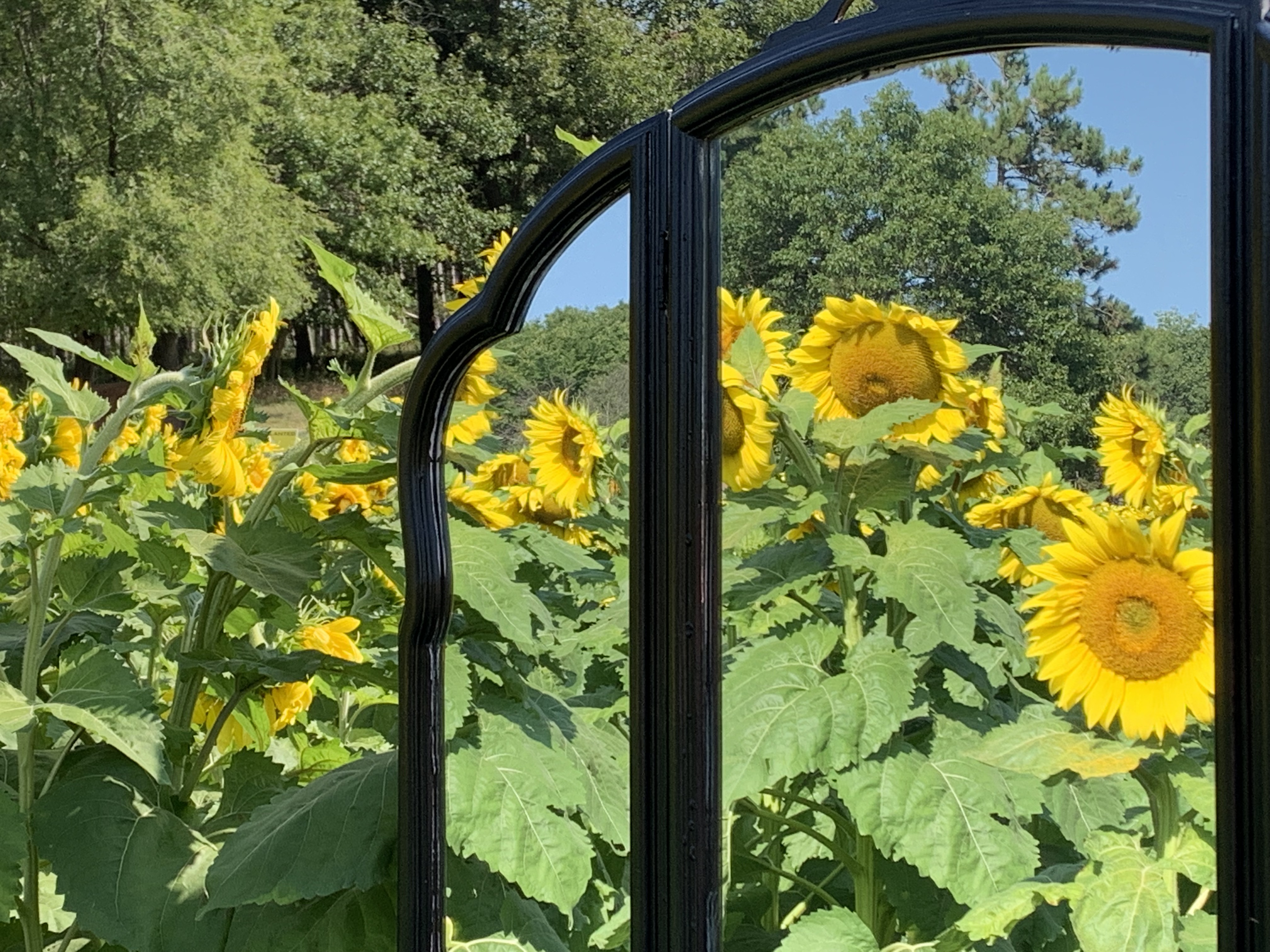
This dilapidated vintage accent table definitely needed a makeover.
The top was toast, and the finish was wearing away elsewhere. It sat and sat in my workshop while I decided what to do with it. Then I had an inspiration.
Several years ago, I helped one of my kids do an acrylic paint pour technique on the top of a cocktail table for their apartment. It was messy and fun and resulted in a truly unique piece.
Time for another go at it!

Step One: Prepping the Piece
The first task was sanding the table to remove the flaking finish and smooth the top. Then I primed with Zinsser BIN® shellac-based primer and added a couple coats of Farmhouse® paint in “Classic White.” I simply primed the top since I’d be using the acrylic paints there later.

Step 2: Prepping the Paints
For the beachy feel I wanted, I selected several acrylic paints in ocean hues along with metallic white to resemble seafoam and coordinate with the overall piece.
To make the paint pour properly for the effect, it’s necessary to add both water and a medium that enhances paint flow. I like Flood® Floetrol because it’s easy to use and has no unpleasant odor. There are many different recipes for mixing, but I use the formula of roughly one part paint, one part water, and two parts Floetrol to prepare each color.

Step 3: The Fun Part!
Once my paints were prepared, I used a puddling technique to apply them (also known as a “messy pour”). I started with one color and then kept layering each color atop it, repeating the sequence once.
Then I rocked the table from side to side and front to back, sort of like panning for gold. This forces the paint to flow across the table surface and intermix with the other puddles, creating a beautiful pattern. I continued until the entire tabletop was covered.
With this table, I was able to contain the paint on the top thanks to a lip that ran along the four sides. In many cases, this pour technique has to be done over a tarp because the excess paint flows over the sides of the table. You can imagine the mess we had after doing my kid’s large cocktail table!

Here is the design I was able to achieve with the pour. Cool, right? Very reminiscent of ocean waves and seafoam, I think.
I sealed the legs and bottom shelf of the table with Annie Sloan® clear wax, but the tabletop required a different protective technique.

Step 4: The Top Finish
I use a high gloss polymer finish to seal the poured paint. I’ve had good luck with Envirotex Lite®. It consists of a liquid resin and hardener that you mix together just before using. The compound is then poured evenly across the surface and allowed to dry. If any bubbles appear, they must be popped immediately before they dry in place. This can be done manually or, as I did, with a heat gun on low setting. Once dry, the wonderful glossy finish is durable and waterproof.
Is that the roar of the ocean I hear?
Or just Mother Nature cheering because this piece was saved from the landfill? This diminutive table has gone from a discard to an artistic one-of-a-kind accent with just a little paint and some messy fun.
If you have any questions about the acrylic pour technique, this piece, or other items on my blog, please use my contact page. And don’t forget to check out my Instagram (@serendipitysequelsmn).


